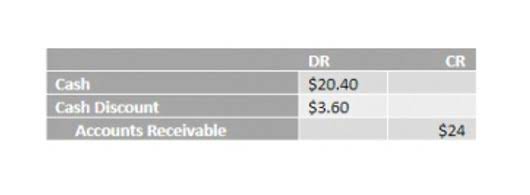
This can impact reported earnings and equity, reflecting the current economic environment. Regulators such as the SEBI in India set standards for MTM accounting to prevent manipulation and ensure fair valuation. These regulations are designed to uphold the integrity of financial reporting and prevent misleading valuations.
- If the stock was purchased at $100 per share and is now valued at $80 per share, MTM accounting would reflect the $20 loss on the company’s financial statements.
- Marketable securities, commodities, and accounts receivable (AR) are reported using this accounting method.
- This approach provides investors and stakeholders with real-time data, ensuring more informed decision-making and a clearer picture of financial health.
- Mark to market (MTM) valuation method plays a crucial role in accurately reflecting the current worth of various financial instruments, such as stocks and bonds.
- An investor buys and sells securities expecting to earn dividends, interest, or long-term appreciation, and their activity does not rise to the level of a trade or business.
- Companies dealing with lending or investments must consider MTM when assessing their assets and liabilities’ current fair value under fluctuating market conditions.
- Full market value accounting would require all assets and liabilities to be valued in a similar fashion.
Income Tax Audit 2025: Deadline Pressure and Extension Demands
- It’s important to note that market-based measurements of assets don’t always reflect the true value of the asset if the price is fluctuating wildly.
- Understanding mark to market is essential for anyone involved in finance, investing, or accounting to remain competitive and successful in their respective fields.
- Mark to market loss refers to losses incurred by an investor when the market value of their financial assets declines below their purchase price.
- This includes banks, insurance companies, investment firms, and other organizations involved in trading securities or extending credit.2.
- By valuing assets and liabilities at their current market prices, it provides a realistic view of the financial health and exposure of counterparties involved in the swap.
Our newsletters blogs cover the latest industry news, market insights, investment strategies, new schemes, and other exclusive updates. Stay informed about how world affairs impact the Indian economy with our newsletter. We provide step-by-step instructions, investing tips, and advice on protecting one’s wealth. Our articles about the stocks offer comprehensive insights into the market’s latest updates, mistakes to avoid, new launches, and much more. By providing up-to-date information on asset values, Mark to Market helps investors manage risk more effectively in the share market. This method gives investors a clear and accurate picture of their portfolio’s worth if the shares were to be sold at that moment.

#1 – Available for Sale Securities Example

If you hold a contract and the market moves in your favour, your account is credited with the profit that day. Historical cost accounting, on the other hand, values assets and liabilities based on their original purchase price. Under this method, the value of an asset remains constant unless there are specific events, such as impairment or obsolescence, that how is sales tax calculated require adjustments.
KenWoodPC’s Approach to Managing Overhead Costs
Mark to market is particularly important in industries such as banking, trading, and investing, where asset values can change mark to market value frequently due to various market conditions. Mark to market accounting significantly influences financial statements by reflecting the real-time value of assets and liabilities. This dynamic approach can lead to substantial fluctuations in reported earnings, especially for entities holding a large portfolio of financial instruments. For instance, during periods of market volatility, the fair value of securities can swing dramatically, impacting the income statement through unrealized gains or losses. These fluctuations can provide a more accurate picture of an entity’s financial performance, but they also introduce a level of unpredictability that can be challenging for stakeholders to navigate.
Sporadic Land Sales After 22 Years Held as Capital Gains, Not Business Income: ITAT Chennai

Under partial MVA, measured capital is likely to be volatile as the value of assets fluctuates while the value of liabilities stays constant. Under FAS 115, then, measured capital could be a misleading indicator of the actual amount of interest rate risk inherent in the banks’ operations. The principal cause of the bank’s failure was its large holdings of long-term government bonds and securities. While relatively safe, the securities lost market value when interest rates on newly issued securities rose. The bank had been listing them How to Run Payroll for Restaurants on its books as HTM, or held to maturity, securities, which allowed it to value them at their historical prices.
- On the other hand, MTM gains, also known as mark to market gains, refer to gains earned by an investor when the market value of their financial assets increases above their purchase price.
- The regulatory framework surrounding mark-to-market requirements is a critical aspect of understanding the role of mark-to-market in determining swap rates.
- Critics argue that it can introduce volatility into financial statements, as market fluctuations directly impact reported values.
- By ensuring fair pricing, reacting to market fluctuations, and facilitating risk management, mark-to-market accounting plays a crucial role in maintaining the integrity and efficiency of the swap market.
- MTM accounting helps provide a real-time valuation of assets and liabilities, offering insight into a company’s finances that historical cost accounting may not reveal.
- That’s regardless of whether or not the company intends to hold those Treasury bonds until maturity, at which point they could be redeemed for the full face value.
Under the FASB guidelines, the notion of fair value is defined and the manner companies are required to measure the value of their asset is by adopting the generally accepted accounting principles (or GAAP). The process of marking to the market is an accounting operation as the company does not sell the asset or security being marked. Many executives at Enron were indicted for a variety of charges and some were later sentenced to prison. As a consequence of the scandal, new regulations and legislation were enacted to expand the accuracy of financial reporting for public companies. Some argue MTM rules should be relaxed during crises to avoid creating a downward spiral. For example, allowing banks to carry assets at amortized cost rather than fire-sale prices.